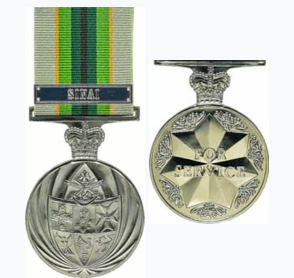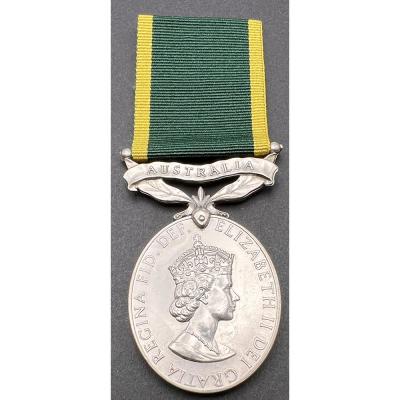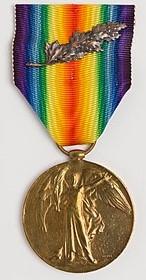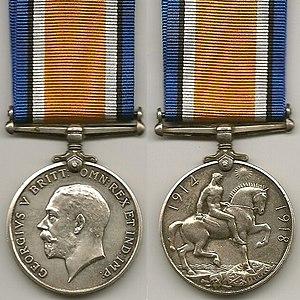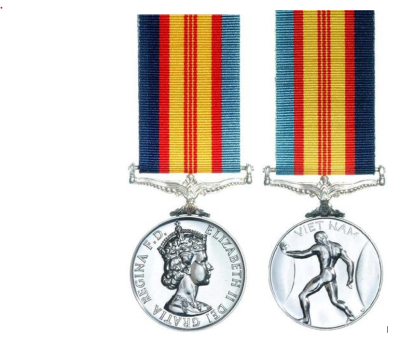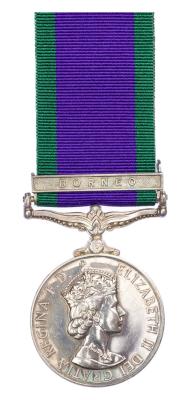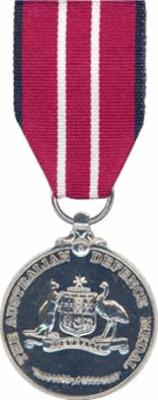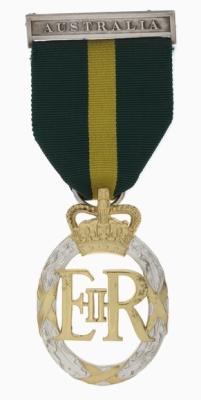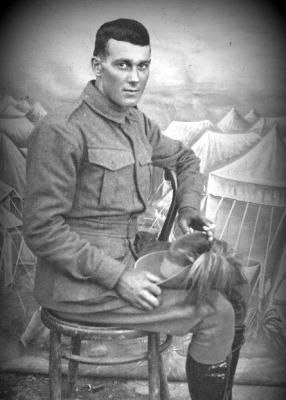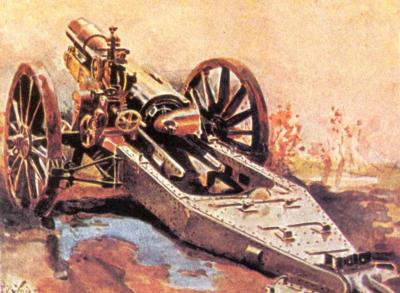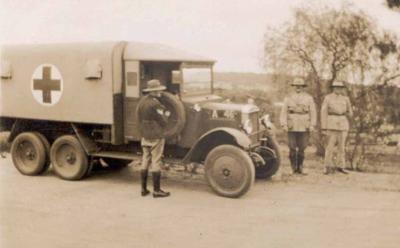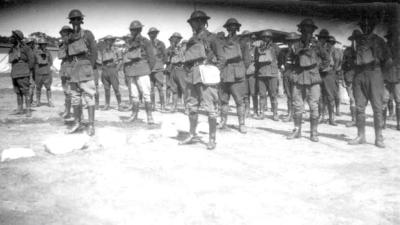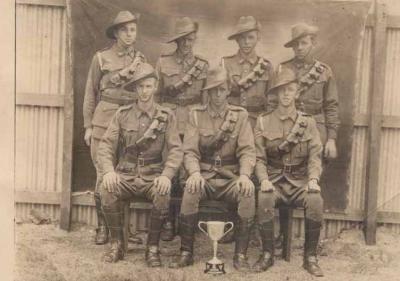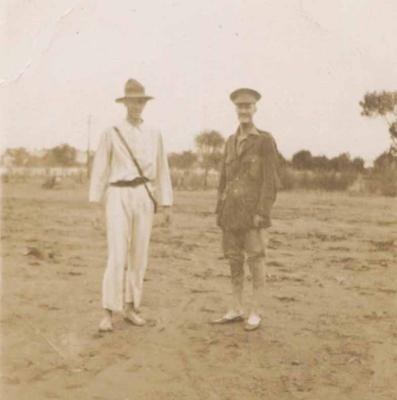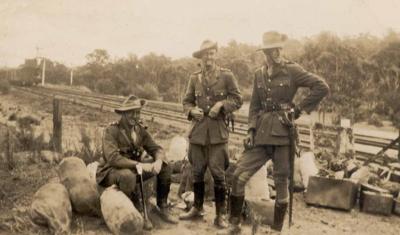Medal - Volunteer Long Service Medal to Australia (1895-1902)
The Volunteer Long Service Medal was struck in silver and is a disc, 37 millimetres in diameter, with a raised rim on each side. It is suspended from a straight swivelling silver bar, affixed to the medal by means of a claw and a pin through the upper edge of the medal. The obverse of the medal depicts the reigning monarch.
Two versions of the Volunteer Long Service Medal were struck. The original version of 1894, created by George William de Saulles, shows the effigof Queen Victoria wearing the Crown, a veil and the Star of the Order of the Garter. The effigy is circumscribed "VICTORIA REGINA". This version's suspender is affixed to the medal by means of a double-toe claw. Some Queen Victoria versions of the medal were awarded up to the Army Order of July 1902, post-dating her death.
The King Edward VII version, introduced after his succession to the throne in 1901, displays his effigy in Field Marshal's uniform and is circumscribed "EDWARDVS VII REX IMPERATOR". This version's suspender is affixed to the medal by means of a single-toe claw.
The reverse shows a palm and laurel wreath that supports a scrolled banner bearing the inscription "FOR LONG SERVICE IN THE VOLUNTEER FORCE" in four lines.
The medal's ribbon is plain dark green and 32 millimetres wide.
The Volunteer Long Service Medal was instituted in 1894 as an award for long service by other ranks and some officers of the United Kingdom's Volunteer Force.. On 13 June 1896 the grant of the Volunteer Long Service Medal was extended by Queen Victoria to members of Volunteer Forces throughout the British Empire, defined as being India, the Dominion of Canada, the Crown Colonies and the British Protectorates.. Institution of this medal was not, as usual, by Royal Warrant but in terms of a special Army Order. This medal was similar in design to the Volunteer Long Service Medal, but bore different inscriptions on the obverse of each monarch's version to include India, the Dominion, the Colonies and the Protectorates as subjects of the reigning monarch.
Award of the medal was discontinued when it was superseded by the Territorial Force Efficiency Medal in 1908
Details
Details
From the beginning many military awards for both bravery and long service had distinctions based on class, rank or responsibility. Awards could be issued in different medals, gold, silver or bronze. Their could be a Cross for officers and a medal for other ranks for example Military Cross and Military medal. For long service, officers received a Decoration, soldiers a Medal. Contemporary practice has been to remove rank restrictions for bravery awards while retaining options for the circumstancesof the action. Recognition for exceptional service such as the Oder of Australia retains criteria for the level of service being commended. In general long service medals have no rank distinction only years of service.
In contrast to the previous policies for medals, sacrifice was traditionally been recognised as equally honoured. Rank distinctions are not normally found on Memorials and Honour Boards, the Australian War memorial being a national example.
Medals are displayed in context throughout the Museum. All medals are identified, archivally stored and those not on display are accessible and viewable with prior notice.
Australian Army Museum of Western Australia
Australian Army Museum of Western Australia
More items like this
Other items from Australian Army Museum of Western Australia
- Medal - Efficiency Decoration
- Medal - Centenary Medal
- Medal - Civilian Service Medal 1939-45
- World War 1, Australia, Western Australia, 454 NELSON, 10 Light Horse
- World War 1, Australia, Western Australia, 3952 TEEDE, 10 Light Horse
- World War 1, Western Front, France, 6inch BL Howitzer
- Inter War, Western Australia, Rockingham, 3 Field Artillery Brigade, 1938
- World War 2, Western Australia, Melville, 3 Field Artillery Regiment, Gas Traaining, , 1939
- Inter War, Western Australia, Perth, 103 Howitzer Battery, 1938
- Inter War, Western Australia, Northam, 3 Field Artillery Brigade, 1938
- Inter War, Western Australia, Northan, FITZHARDINGE, MONTIPORE, Northam, 1938
- Inter War, Western Australia, Clackline, FITZHARDINGE, MONTIPOTR, CLIFTON, 103 Howitzer Battery
